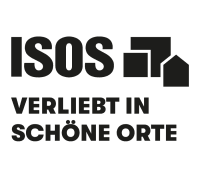Werdenberg
Hint
Intro
Werdenberg is the oldest timber-frame settlement in Switzerland and is best known for its castle of the same name, which sits majestically on the hill above the town. The small Lake Werdenberg lends further charm to the place.
Werdenberg at a glance
The majestic Werdenberg Castle can be seen from far and wide. On the castle hill, it towers 45 metres above the valley floor, framed by the Churfirsten panorama and offering magnificent views over the Rhine Valley to the Alps. Now owned by the canton, it is of considerable size, having once been only a single tower. Later additions include the spacious stairwell, the perimeter wall and the castle courtyard with cistern.
In the Middle Ages, the castle was the seat of the Counts of Montfort and Werdenberg and, from the 16th century, the bailiwick seat of the people of Glarus. As well as being used as a military hospital by French troops during the Napoleonic Wars, it also survived the notorious föhn storms of the Rhine Valley, which often caused fires to break out.
At the foot of the castle hill is the small medieval town of Werdenberg, which has a picturesque market square with arcades. The remnants of an arched gateway are evidence of the former main entrance. A delightful pathway leads up some steps and through vineyards to the castle. On the valley side, Werdenberg lies nestled against the small Lake Werdenberg. The lakefront once formed the fortified town wall. Remnants of the wall still visible today can be seen as an impressive plinth on which the pretty wooden houses from the 15th to 17th centuries were built. A particularly valuable example from an architectural perspective is the Schlangenhaus with its Baroque ornamental painting.
ISOS
ISOS is the Federal Inventory of Swiss Heritage Sites of national importance. The inventory is maintained by the Federal Office of Culture (FOC) and lists the most significant settlements in Switzerland. Today, some 1,200 places are included in the inventory, from hamlets right through to cities. The inventory provides information on the development and identity of the settlements listed in it, thereby contributing to the preservation of architectural diversity in Switzerland and promoting both sustainable planning and a high-quality Baukultur.








